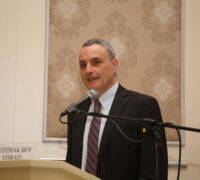In 2015, the United Nations laid out 17 Sustainable Development Goals (SDGs) – including eliminating extreme poverty, ensuring inclusive and equitable education, and access to affordable and clean energy for all. Halfway through the midway point, it has become clear that the world is well short of the pace needed to meet those goals by 2030.
One huge headwind is financing. While the global impact investment market is expected to swell to a record $495 billion in 2023, the volumes are very small relative to what’s needed. Compare this to the roughly $50 trillion in pension fund assets managed globally. Just half of the management fees that these pension funds charge could double the investment into education and infrastructure in Sub-Saharan Africa.
There are several reasons why pension funds aren’t funneling more money into sustainable development projects.
First, it comes down to financial regulation. Simply put, in most advanced economies, the fiduciary duty of pension fund managers is to maximize the value of these pensions for investors. Speaking at the 2022 Building Bridges conference in Geneva, Blackrock Vice Chairman Phillip Hildebrand said that, unless instructed otherwise by regulators, “as a fiduciary agent, we approach investments under the criterion of risk.” However, focusing on a narrow definition of maximizing current profits and risks might serve the pensioners who are due to retire tomorrow. But by ignoring, for example, long-term climate risks, you could end up diminishing returns for future pensioners.
At the same time, to increase competitiveness and accountability among pension funds, they are required to report their financial returns at least annually. The downside of this reporting requirement is that it incentivizes short-termism, with fund managers’ bonuses linked to their performance that year rather than in 20 years’ time.
The second challenge is the claim that there is a lack of investible projects. To convince pension funds to invest, projects need well-defined goals, the right governance and reporting structures, transparency, and ESG requirements. Given the fact that the world’s poorest tend to live in countries that often face governance challenges, many impact investors will cherry-pick certain projects where they see less risk of funds going astray due to corruption. However, this limits the scale. As former Chief Economist of the World Bank Francois Bourguignon and Jean-Philippe Plateau have pointed out, corruption aversion has in the past trumped poverty aversion by some donors.
Third, many of the projects considered to be sustainable by the West won’t be enough to transform the economies of developing nations and eradicate poverty. Too much funding goes into agricultural projects, which are easy to measure. However, if we look at the economies of advanced nations, only a small proportion of GDP comes from agriculture. Instead, more investment should go into education and human capital. Yet, this is hard to measure, and even harder to realize short-term returns from, so investors go after the low-hanging fruit instead.

Audio available





